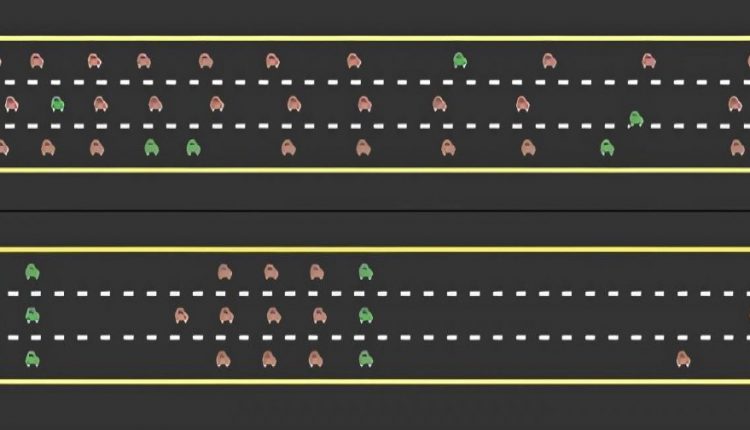
A Few Self-organizing AVs Can Improve Traffic Flow Speed by 40%
The National Highway Safety Transportation Administration is clear: driver assistance technologies save lives and prevent injuries. Lane keeping, back-up warning, and automatic braking can help vehicles identify safety risks and avoid accidents.
As we move to autonomous vehicles, increased safety isn’t the only benefit. A recent Israeli study indicates that with the addition of just a small number of AVs on the road, traffic flow can become faster, greener, and safer in the near future.
The study, published in Journal of Physics A: Mathematical and Theoretical, focused on the anticipated hybrid traffic flow of the future, which will combine traditional, human-operated vehicles with a small fraction of AVs. This scenario raises several questions as to whether traffic flow would actually improve and, if so, how many AVs would be required to produce significant change.
It may seem that a large number of AVs is required for a significant impact on traffic flow, especially on multi lane freeways, as human drivers can simply ignore and bypass AVs. But this isn’t necessarily so. In their research, Dr. Amir Goldental and Prof. Ido Kanter, from the Department of Physics at Bar-Ilan University, present a simple set of guidelines and regulations for achieving the self-organization of AVs into constellations that dynamically control the entire traffic flow.
The researchers suggest guidelines for efficient regulations, such that AVs can cooperate and significantly enhance traffic flow even when fewer than 5% of the vehicles on the road are autonomous, as seen in this video and the image above. In their article, the researchers describe how AVs should behave on a freeway in order to self-organize into groups that split the traffic flow into controllable clusters. It was observed that it takes less than two minutes to achieve self-organized high-speed, greener and safer traffic flow when starting from congested traffic.
“Without regulations on AVs, we face a classic example of game theory paradox, such as the prisoner’s dilemma, where each vehicle tries to optimize its driving speed but the overall traffic flow is not optimal. In our research we examine how, with proper regulations, a very small number of AVs can improve the overall traffic flow significantly, through cooperation,” says Goldental.
Quantitatively, the authors report a substantial increase of up to 40% in traffic flow speed with up to a 28% decrease in fuel consumption. Also, traffic safety is enhanced as traffic becomes more ordered and fewer lane transitions occur. The study shows that these improvements can be achieved without a central agent that governs AVs and without communication between AVs using current infrastructure.
Source: Bar-Ilan University
